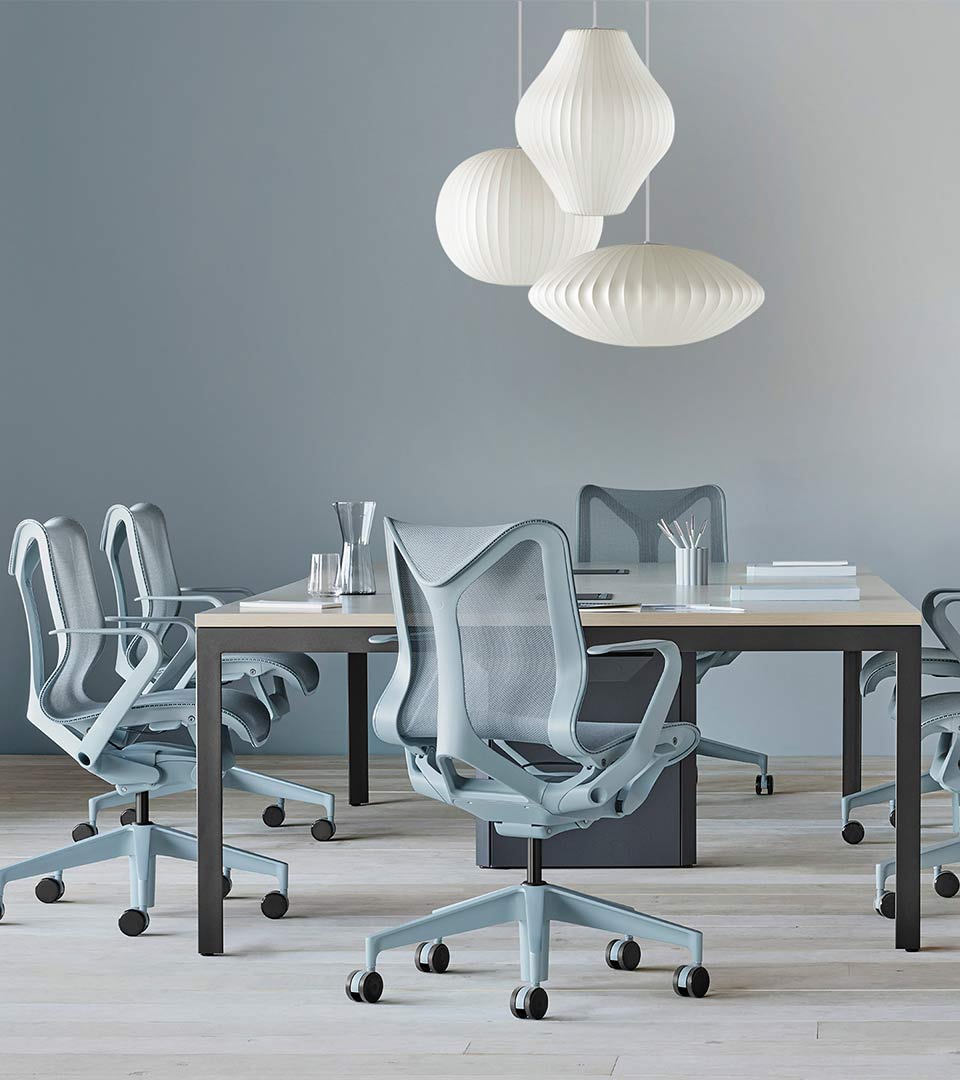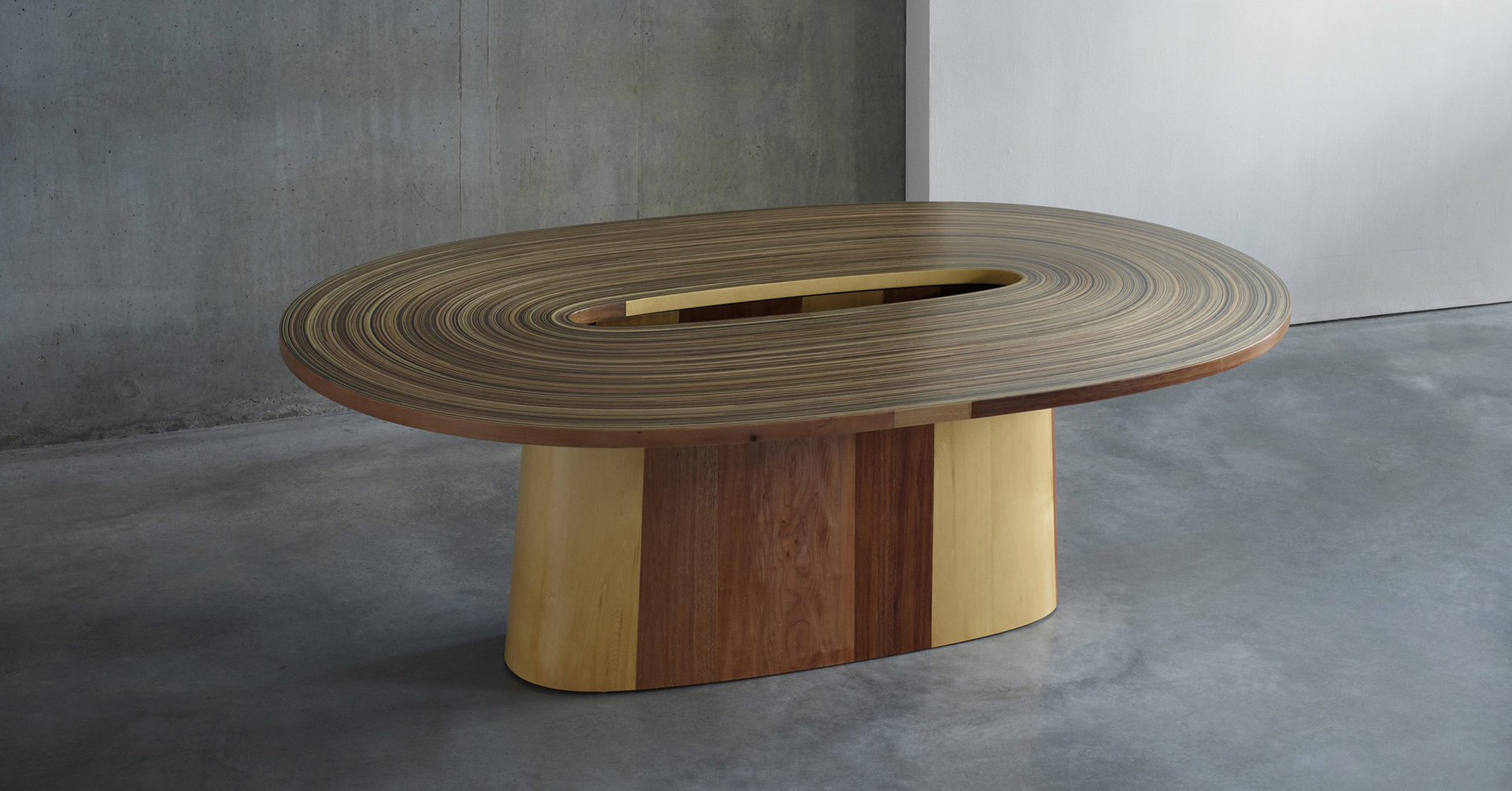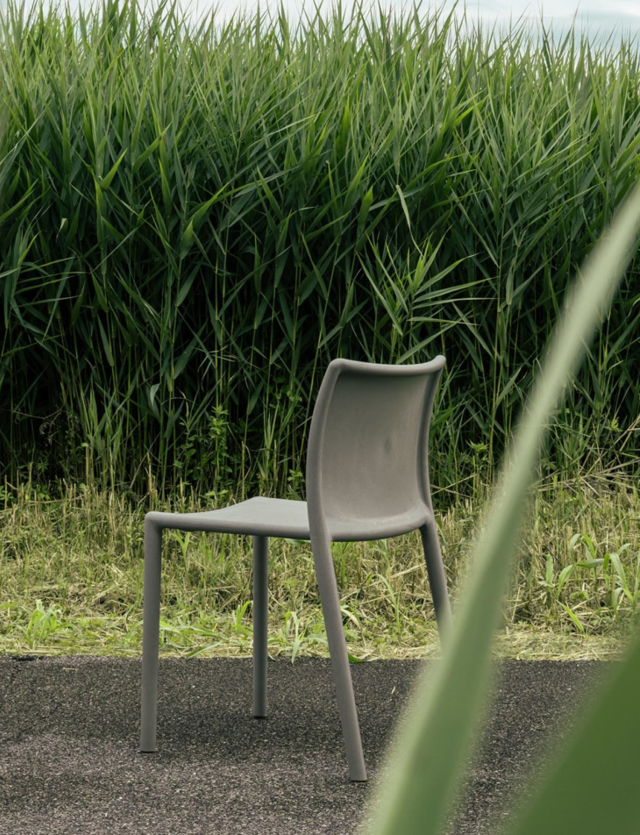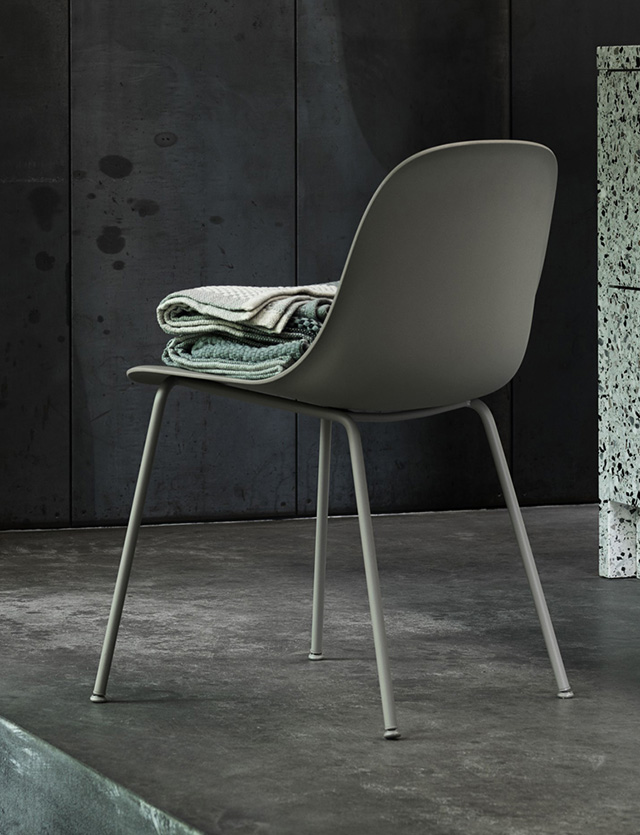Known around the world for his critically acclaimed pieces that use forgotten and discarded materials, designer Brodie Neill is inspired by the perfect proportions found in nature.
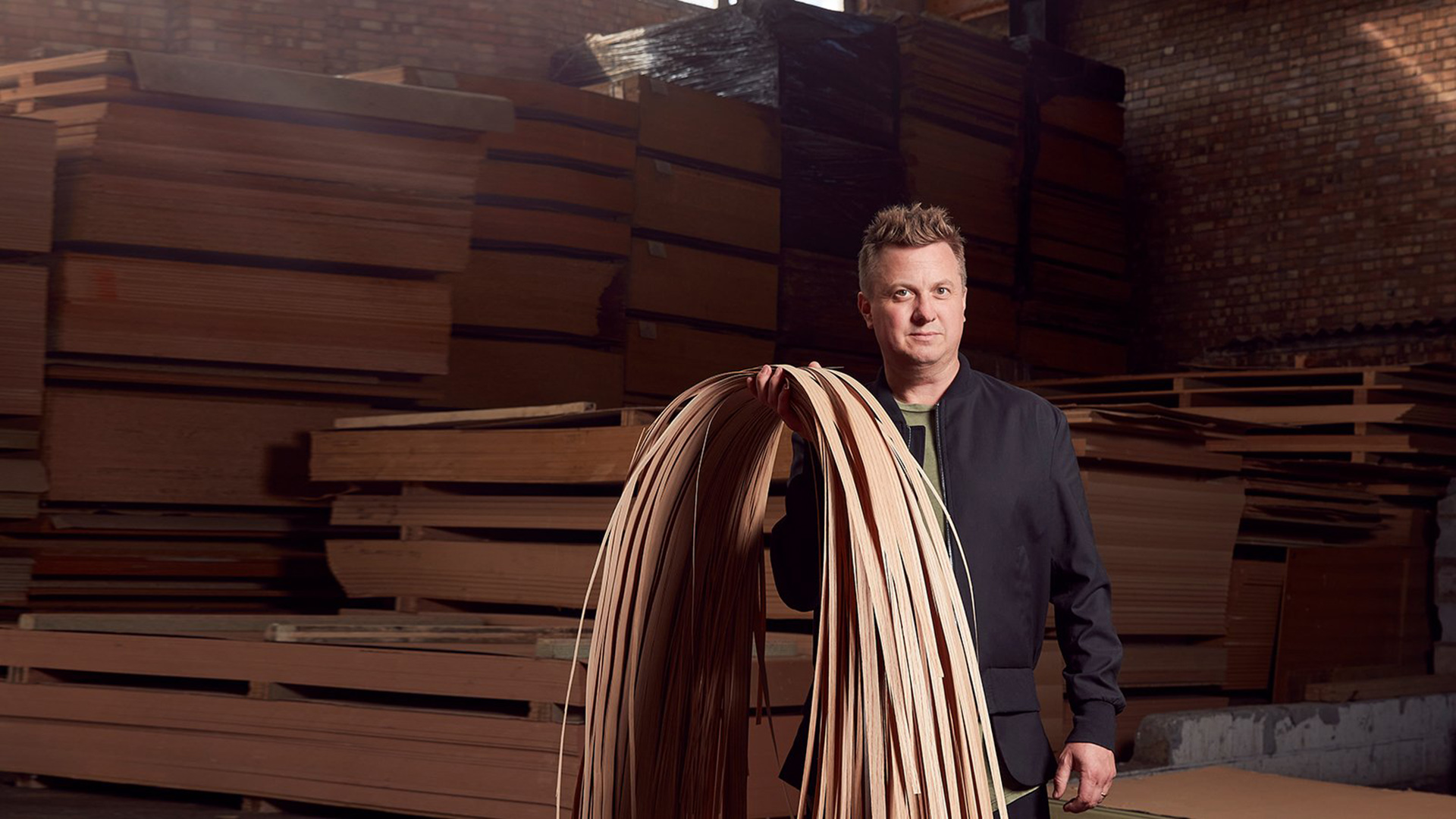
Everyone’s idea of ‘waste’ is different—the classic ‘one man’s trash’ trope. Some people have a looser definition than most. When designer Brodie Neill looks at fragments of ocean plastic or offcuts of timber, he doesn’t see waste. He sees potential.
"These Tasmanian timbers—they were the building blocks of my career,” explains Brodie. “I was taught that every time you pick up a piece of material, you’ve got to think about everything that’s gone into its creation."
Brodie is known around the world for his critically acclaimed pieces that use forgotten and discarded materials, inspired by the perfect proportions found in nature. He says his consideration for the environment was nurtured by growing up in Tasmania, but it was waste that inspired him to turn the forgotten into furniture.
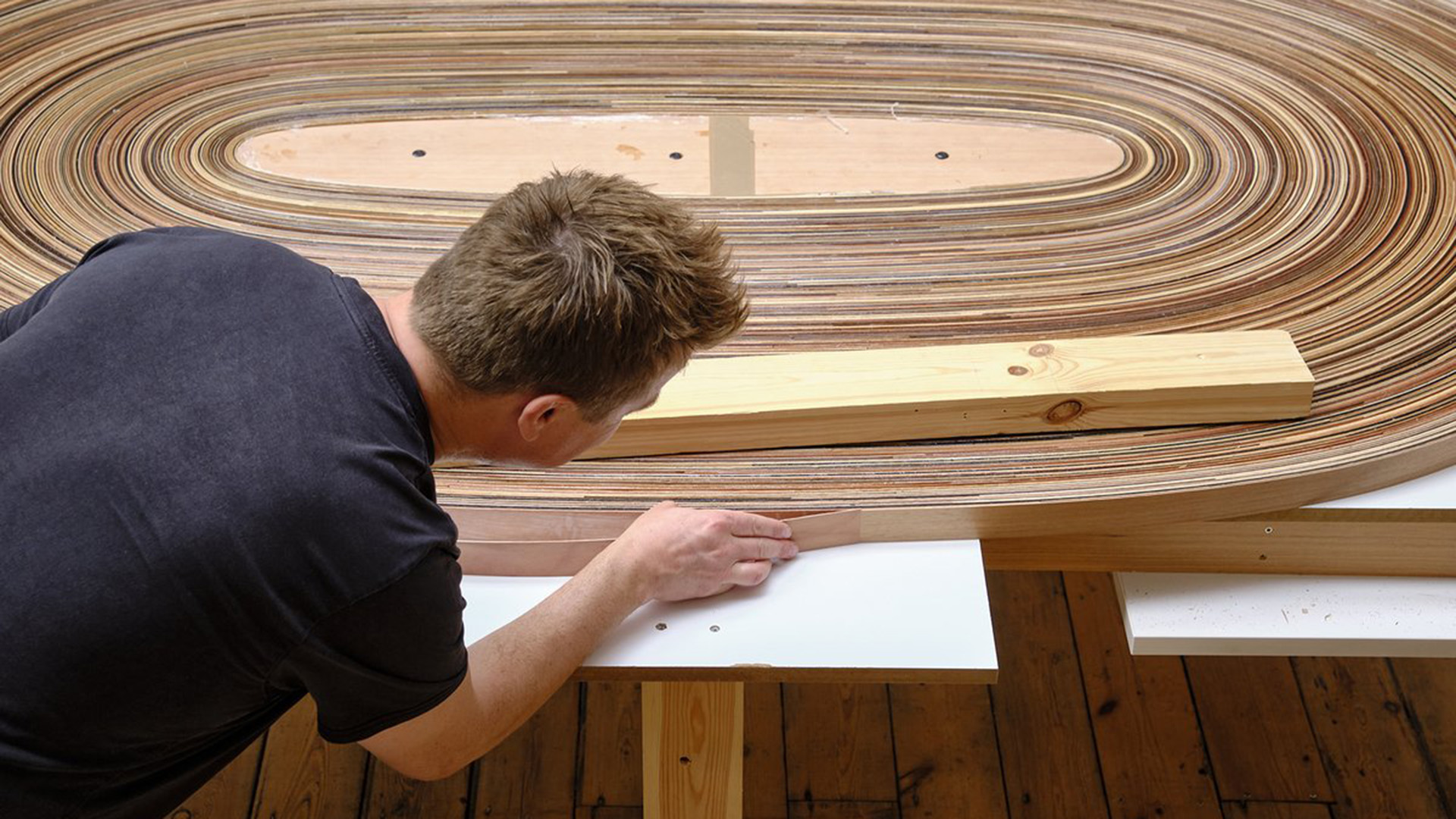
“My kind of ‘what if’ moment was down at Bruny Island. I was by myself, walking along a beach, and was quite shocked by all this plastic. Normal downstream from a city, but it really shook me.”
Brodie thought about everything it took for those plastics to end up on that beach. The extraction of the fossil fuels, the refinement, the generation of the plastics. The making of the product, the use of the product, the discarding of the product… and that product finding its way into nature and onto those island shores, reformed by the waves and mutated beyond recognition.
“It’s a huge path of change. I thought, ‘this can’t stay in the environment.’ All I’m really doing is closing that loop, putting it back into circularity in the form of furniture pieces.” Brodie was interested in pushing boundaries in design even before he knew what the industry of ‘furniture design’ was. He built furniture as a teenager in his spare time, using any simple tools at his disposal, before discovering the opportunities at University of Tasmania (UTAS). The strong, supportive sense of community and natural connection to the environment drew him to looking at materials in a uniquely Tasmanian way.
"The tree that’s taken centuries to grow, the many hands that it’s gone through to get to you. There’s a real responsibility in what you choose to do with that." - Brodie Neill
“I studied furniture design at Hunter St. [UTAS campus] and these materials—these Tasmanian timbers—they were the building blocks of my career. I was taught that every time you pick up that piece of material, you’ve got to think about everything that’s gone into its creation. The tree that’s taken centuries to grow; the many hands that it’s gone through to get to you. There’s a real responsibility in what you choose to do with that. You can’t be wasteful, and I think that’s stayed with me my whole career.”
After completing his studies at UTAS, Brodie finished his master’s at the Rhode Island School of Design (USA), before opening a studio in the UK where he still lives and works today, transforming forgotten, discarded materials into mesmerizingly beautiful designs.
Brodie launched Recoil: Design for the Reimagined at London Craft Week 2021, supported by Design Tasmania in collaboration with Hydrowood. The exhibition showcases Brodie’s sustainable design practices, featuring ocean plastics, recycled bronze, and reclaimed timber. The centrepiece is an elliptical dining table made entirely of precious Hydrowood veneer offcuts, originally sourced from the depths of Lake Pieman on Tasmania’s west coast. The veneers are meticulously coiled by hand in outward spirals, creating a warm spectrum of Tasmanian timbers and tones.
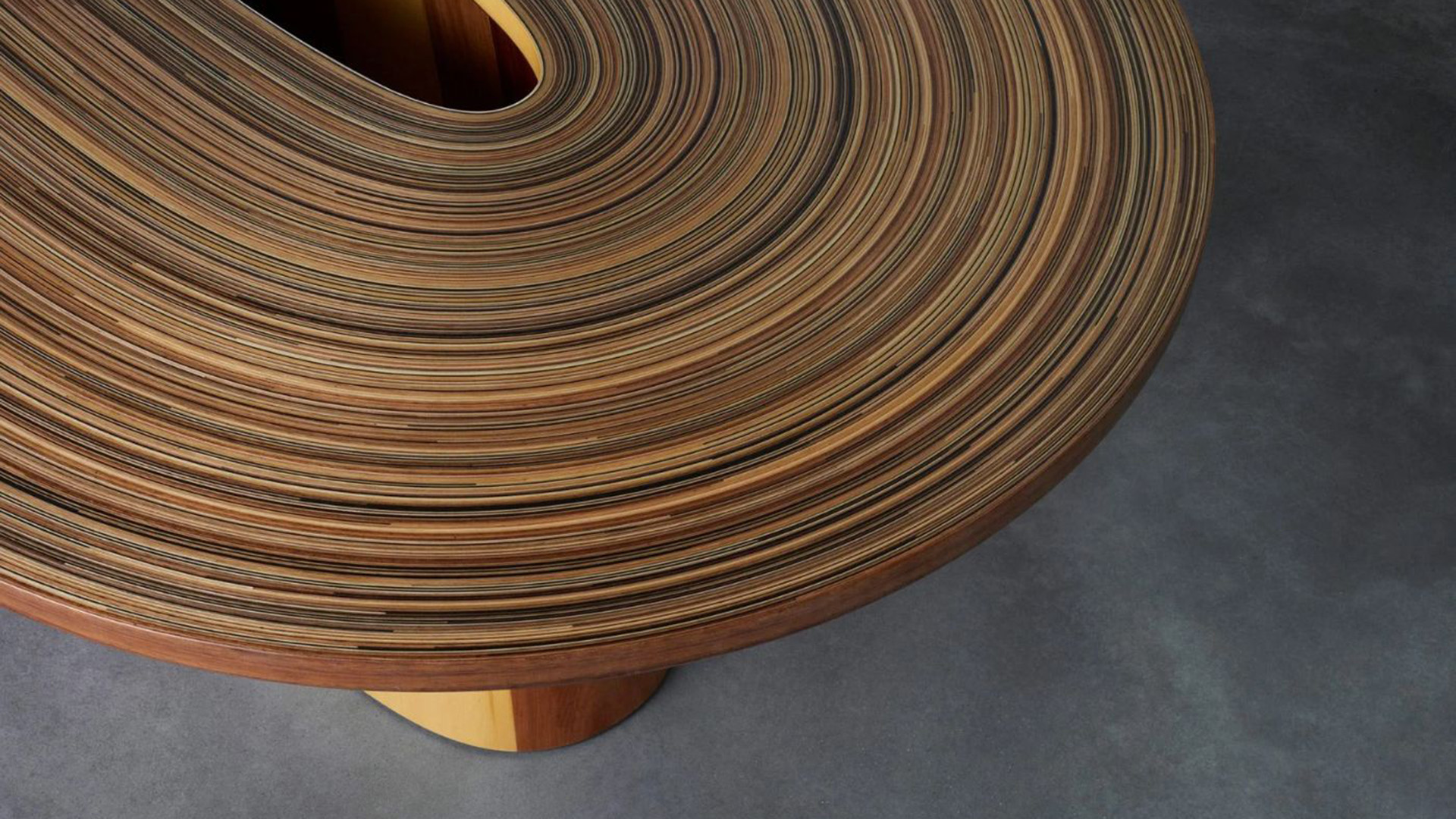
“This really is a collaboration between my two worlds: my Tasmanian foundations, and my career today here in London. It was long, drawn-out process—the recoiling itself took 50 or 60 hours—but it was a very beautiful, therapeutic process. Even though I can’t physically get [to Tasmania] right now, to have these timbers here in the studio was a kind of homecoming. To be here, in London, surrounded by those distinct smells of Huon Pine, the subtlety of Myrtle… it really drives back those memories.”
The design of the surrounding exhibition at London Craft Week encourages this sense of place, transporting the viewer to the other side of the world to experience Brodie’s Tasmanian roots.
“We’re using moody images of Lake Pieman; that haunting, cold winter’s morning that only Tassie can do. The kind of images you can almost smell. They inject you with that early morning optimism, that freshness, that emotional and textural wildness. That’s the scene we’re trying to set through this exhibition. That’s the emotion we want to bring across.”


